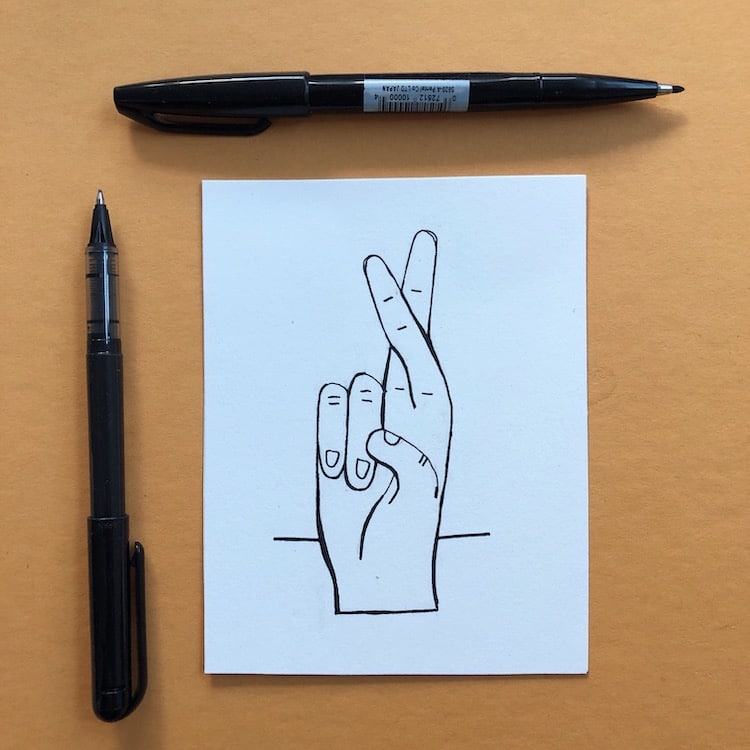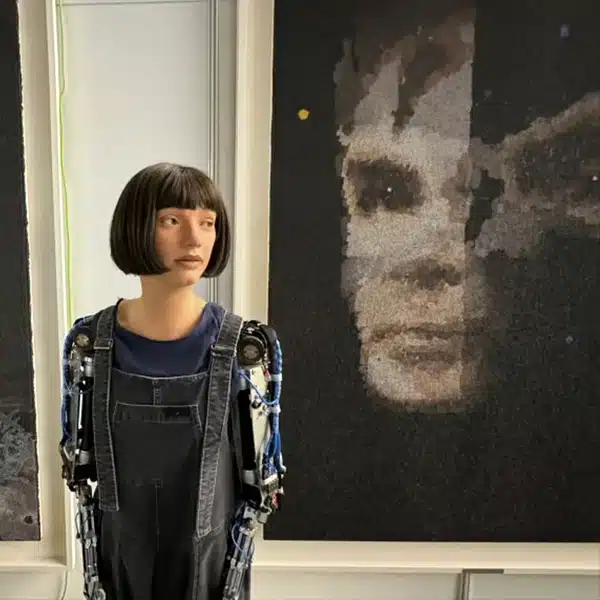
A drawing done in only contour lines.
Photo: Toa Heftiba
There are some techniques that are so essential to art that you may not even realize they have a name. Even the lines you make while doodling have a term for them; they are called contour lines, and they are the basis of all drawing. To sketch an object, you typically use this type of line to define a shape on paper, canvas, and beyond. Although contour lines help illuminate a form, there are a couple of important characteristics of them. The biggest is that there is no shading involved.

The Dance by Henri Matisse
So, what are contour lines used for? This type of mark is a fundamental of line art. Though simple, it is a powerful tool for expression. One line, or a series of them, can convey ideas and emotion. Artists such as Leonardo da Vinci have used contours in their sketches, while Henri Matisse employed the use of dark lines to outline his jubilant figures in The Dance.
Types of Contour Lines
Contour lines have seemingly infinite possibilities for making a creative statement. If you've ever taken an art class, it was probably one of the first things you drew. But did you know that there are different types of contour lines and exercises to try? Each type allows you to express a subject in a similar but unique way.
See how the same object can be transformed through the use of line.

How different can one object look? Find out below.
Photo: Sara Barnes / My Modern Met
Single Contour Lines with Varied Line Weight

Contour lines with varied line weight
Artwork & photo: Sara Barnes / My Modern Met
When you think of a contour line, this might be what you picture. Here, the hand statue is drawn with single lines and no shading. Because of this, line variation is important in this type of contour line drawing; the thicker the line, the more visual emphasis is paid to it. So, for elements of artwork that you would like to accentuate, make the marks thick. This is ideal for conveying the weight of an object or parts that would typically be in shadow.
For this type of drawing, it's helpful to use more than one utensil with a varying tip size (in pens) or a softness of graphite (pencils).
Cross Contour Lines

Cross contour lines
Artwork & photo: Sara Barnes / My Modern Met
Although there is no shading with contour lines, there is a substitute for it—cross contour lines. This style of drawing uses lines to follow the form of the subject and define its characteristics and most importantly, its form. In doing so, a three-dimensional portrait emerges that's similar to a topographical map. The closer together the lines, the darker an area will appear. The more curved the lines, the more rounded the subject looks.
Continuous Contour

Continuous contour
Artwork & photo: Sara Barnes / My Modern Met
Think about how you create a typical line drawing; chances are that you pick up your pencil or pen from the paper countless times. With a continuous contour drawing, however, you’ll never remove your utensil from the surface of your canvas until the entire drawing is complete. The tip should always be touching the paper. As a result, a single line follows the form of your subject and creates a circuitous path that defines the big shapes and small details—and resembles one long string.
Blind Contour

Blind contour
Artwork & photo: Sara Barnes / My Modern Met
If continuous contour drawing sounded challenging, creating a blind contour drawing will be even more daunting—but this fun activity will make you smile at the results. The “blind” in blind contour comes from the fact that you will never look down at your paper while drawing. Begin with your pen or pencil—we recommend a pen so it won’t smudge—on the page and then start at the bottom of the shape. As your eye slowly moves around the object, keep your drawing utensil moving. Unlike continuous contour, you can pick up your pen, a fact that only adds to the charm of this exercise by making things even more askew. When you’re done, look down at your paper to see how you captured (or didn’t capture) the likeness of your subject.
Check out our recommendations for more drawing games and drawing challenges that will get your creative juices flowing.
Share your contour line drawings when you join our Art, Design, Photography, and Drawing Club on Facebook!
Related Articles:
Want to Get Better at Art? Here’s Why You Need to Try Still Life Drawing
10 Drawing Books That’ll Teach You Everything You Need to Know About Sketching
75+ Drawing Ideas That Will Get You Sketching Right Now
7 Fun Drawing Games That Challenge You to Flex Your Creativity Muscles
Learn the Basics of Perspective to Create Drawings That Pop Off the Page






















































































